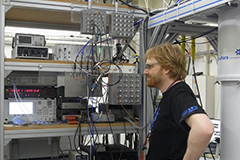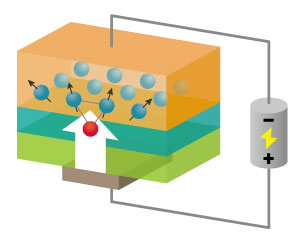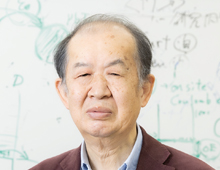
We study quantum effects that appear in nanoscale structures and apply them to functional nanodevice. We focus on hybrid nanostructures, such as carbon nanotube/molecule heterostructures and topological insulator or nanostructures/superconductor hybrid nanostructures as well as nanoscale Si transistors, to study quantum effects and to realize unique functionalities that enable us to control electrons, photons, excitons, and Cooper pairs on a single quantum level. With those, we develop quantum information devices and study physics behind them for future low-power nanoelectronics.
Towards Majorana qubit with superconductor/InAs nanowire hybrid structures
To maintain quantum coherence is an essential requirement for the quantum computer. But, it is really a tough requirement because of decoherence and noise that could easily induce error in the computing processes. Majorana zeromodes (MZMs), simply mentioned as Majorana fermion, could help to solve this difficulty as it is predicted to be robust against such local disturbance. Although Majorana fermion has not convincingly been demonstrated, we are trying to search for it in the superconductor/semiconductor nanowire and/or superconductor/topological insulator hybrid structures, in order to realize the “Majorana qubit”. The figure shows a SNS (Super-Normal-Super) type Josephson junction with a InAs nanowire grown by molecular beam epitaxy (MBE) technique followed by the in-situ deposition of the Al contacts. We are trying to measure the energy spectrum of the MZMs by fabricating the RF-SQUID with the nanowire JJ and coupling it to the microwave resonator. This work has been carried out in collaboration with Prof. Thomas Schäpers in Julich Research Center in Germany.

Scanning electron microscope image of the InAs nanowire Josephson junction with Al contacts
Towards hybrid quantum information devices with quantum dots in a microwave resonator
We study quantum dots interacting with microwave photons in a superconducting coplanar waveguide resonator for the future hybrid quantum information devices. The quantum dot, or an artificial atom in other words, can realize a large electron-photon interaction at a single quanta level simply because the size of the artificial atom is much larger than natural atoms. Then, entanglement between an electron and a photon would be possible, a key requirement for quantum information processing. The single spin-photon interaction is also being explored with a help of a spin-orbit interaction (SOI). We use InSb or Ge/Si nanowire quantum dots that have a large SOI and are placed in a resonator (see fig). The double dot is formed by applying gate voltages on the finger gates underneath the nanowire. We measure microwave transmission at low temperatures (~100mK), and study resonant characteristics that are affected by microscopic charge (or spin) states of the double quantum dot. At this moment, we observe an charge-photon interaction with less than single photon in a resonator, but have not succeeded in realizing coherent interaction because of a large decoherence in the quantum dot.

Scanning electron microscope image of the Ge/Si nanowire quantum dots embedded in a superconducting coplanar waveguide resonator.







